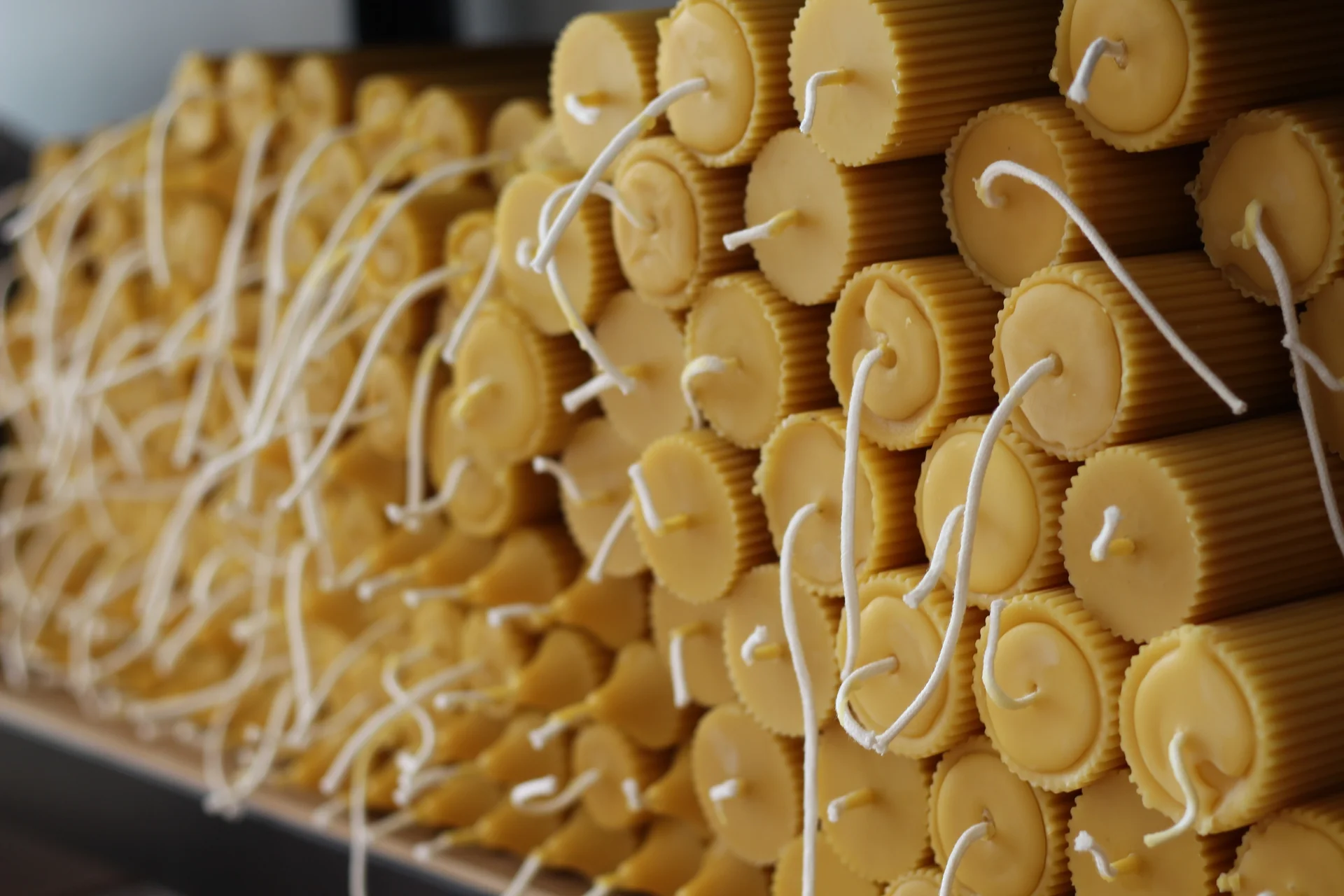For those who enjoy the relaxation and ambiance that candles bring, making your own DIY candles can be a rewarding and creative hobby. One important factor to consider when embarking on your candle-making journey is choosing the right candle wicks. While they may seem like a small component, candle wicks play a crucial role in the performance and burn of your candles.
Understanding the Importance of Candle Wicks
Before diving into the different types of candle wicks, it’s essential to understand the significance of these seemingly inconspicuous elements in candle making. Candle wicks serve as the pathway for the flame to access the fuel source, which is the melted wax. Therefore, they are responsible for initiating and sustaining the burn of the candle.
Delving deeper into the world of candle wicks unveils a fascinating realm of science and artistry. The selection of the appropriate wick is not merely a technical choice but a delicate balance of factors that can significantly impact the overall candle experience. From the choice of material to the intricacies of wick structure, every detail plays a crucial role in the performance of the final product.
The Role of Wicks in Candle Making
Wicks are primarily responsible for drawing melted wax up to the flame’s heat, where it vaporizes to produce light and heat. This process, known as capillary action, is facilitated by the wick’s structure and material. It is crucial to choose a wick size and material that can effectively deliver fuel to the flame to ensure an even and consistent burn.
Furthermore, the length of the wick also plays a vital role in the candle’s performance. A wick that is too short may drown in the pool of wax, causing the flame to extinguish prematurely. Conversely, a wick that is too long can lead to a large, flickering flame that may produce excess soot and uneven burning. Achieving the perfect wick length is a meticulous process that can elevate the quality of the candle.

How Wicks Affect Candle Performance
The type and size of candle wicks can greatly influence the performance of your candles. A wick that is too small will struggle to draw up enough melted wax, resulting in a weak flame and poor burn performance. On the other hand, a wick that is too large may lead to excessive fuel consumption, dripping, or even sooty flames. It is therefore crucial to find the right balance to achieve optimal candle performance.
Experimentation with different wick types and sizes is often necessary to fine-tune the burning characteristics of a candle. Factors such as the type of wax used, the diameter of the candle, and even the presence of fragrance oils can impact the wick’s effectiveness. Understanding these nuances is key to mastering the art of candle making and creating candles that burn brightly and cleanly.
Different Types of Candle Wicks
When it comes to selecting the right wicks for your DIY candles, you’ll encounter a variety of options to choose from. Each type of wick has its own unique characteristics that can impact the burn and appearance of your candles. Let’s explore some of the most common types of candle wicks:
Cotton Wicks
Cotton wicks are a popular choice among candle makers due to their reliability and versatility. They are typically braided and come in various sizes to accommodate different candle diameters. Cotton wicks are known for their clean burn and minimal sooting, making them suitable for a wide range of candle types.
One of the advantages of cotton wicks is their ability to work well with different types of wax, including paraffin, soy, and beeswax. They are also known for their consistent and steady burn, which helps in creating a uniform pool of melted wax as the candle burns. This makes cotton wicks a great choice for beginners and experienced candle makers alike. Read more about cotton at https://learn.genetics.utah.edu/content/cotton/what/
Wooden Wicks
For those looking to add a touch of uniqueness to their candles, wooden wicks offer an intriguing option. These wicks are made from sustainably sourced wood and create a cozy crackling sound reminiscent of a fireplace. Wooden wicks are often used in soy or coconut wax candles and require a slightly larger flame size to ensure proper burn performance.
Wooden wicks also have the benefit of producing a broader flame compared to cotton wicks, which can result in a faster and more efficient burn. This can be particularly appealing for larger candles or those with a wider diameter, as the wooden wick helps to evenly melt the wax and release fragrance more effectively throughout the room.
Specialty Wicks
In addition to cotton and wooden wicks, there are various specialty wicks available for specific candle types and effects. These include zinc-core wicks for containers with high fragrance loads, self-trimming wicks that reduce mushrooming, and tapered wicks for taper candles. It’s important to consider your specific candle-making needs and desired outcomes when exploring specialty wicks.
When using specialty wicks, it’s essential to follow the manufacturer’s recommendations for optimal performance. This may include trimming the wick to a specific length before each use, ensuring the candle is placed on a level surface to prevent uneven burning, and monitoring the flame height to prevent smoking or sooting. By selecting the right specialty wick for your candle project, you can enhance the overall aesthetic and functionality of your creations.
Factors to Consider When Choosing a Wick
Selecting the right wick goes beyond just choosing a type or material. Several other factors must be taken into account to ensure optimal burn performance and safety. Here are some crucial factors to consider when choosing a wick:
The Size of Your Candle
The size of your candle plays a significant role in determining the appropriate wick size. Larger candles typically require larger wicks to ensure an even and efficient burn, while smaller candles may need smaller wicks to prevent excessive dripping or sooting.
The Type of Wax You’re Using
It’s important to match the wick to the type of wax you’re using for your candles. Different waxes have varying melt points and densities, which can affect how the wick interacts with the wax and burns. Be sure to research the recommended wick sizes and types for the specific wax you’re working with.
The Scent and Color of Your Candle
If you plan on adding fragrance oils or coloring agents to your candles, it’s crucial to consider their impact on the burn characteristics. Some fragrances and colors may require a larger or smaller wick to compensate for any changes in the wax’s properties. Experimenting with small test batches can help determine the ideal wick for scented or colored candles.
Another important factor to consider when choosing a wick is the environment in which the candle will be burned. Factors such as draftiness, humidity levels, and altitude can all affect how a candle burns. For example, a drafty room may cause a candle to burn unevenly or flicker, requiring a thicker wick to maintain a steady flame. Click here to learn more about humidity.
Additionally, the container in which the candle will be placed can impact the choice of wick. A wider container may necessitate a wider wick to ensure that the entire surface area of the candle melts evenly. On the other hand, a narrow container may require a smaller wick to prevent the candle from burning too hot and fast.

Tips for Testing Your Candle Wicks
Before finalizing your choice of wick, it’s important to conduct thorough testing to ensure optimal burn performance. Here are a few tips for testing your candle wicks:
Testing your candle wicks is a crucial step in the candle-making process to ensure that your final product burns safely and effectively. By carefully evaluating various aspects of the wick’s performance, you can make informed decisions that enhance the overall quality of your candles.
Burn Time Testing
Allow your candles to burn for a specific duration, noting any signs of tunneling, uneven melting, or excessive sooting. This will help determine if the chosen wick is suitable for the size and type of candle you’re creating.
During burn time testing, it’s essential to consider factors such as the diameter of the container, the type of wax used, and the presence of any additives like fragrance oils. These variables can impact how the wick interacts with the surrounding environment and influence the overall burn performance of the candle.
Flame Size and Stability
Observe the flame size and stability throughout the burning process. The flame should be neither too small nor too large, and it should burn consistently without flickering excessively or producing excess smoke.
Monitoring the flame size and stability is key to ensuring that your candles burn safely and efficiently. A well-selected wick will create a steady flame that promotes an even wax pool, allowing for a clean and long-lasting burn. By paying close attention to these characteristics during testing, you can fine-tune your wick selection for optimal performance in your candles.
Troubleshooting Common Wick Problems
Even with careful consideration and testing, you may encounter some common wick-related issues. Here are a few troubleshooting tips for addressing these problems:
Mushrooming Wicks
If you notice excessive mushrooming or carbon buildup at the tip of your wick, trim it to a shorter length. This will help maintain a clean flame and reduce the risk of sooting or dripping.
Mushrooming wicks occur when the wick burns too hot, causing carbon buildup at the tip. This can not only affect the aesthetics of your candle but also lead to a decrease in burn time. By regularly trimming the wick to the recommended length, you can promote a steady and clean burn, enhancing the overall candle experience.
Wick Drowning Out
In some cases, the wick may become overwhelmed by melted wax, causing the flame to extinguish prematurely. To prevent this, consider using a larger wick or adjusting the fragrance load to ensure proper fuel delivery to the flame.
Wick drowning out is a common issue when the wick is unable to draw up an adequate amount of wax to fuel the flame. This can result in tunneling, where the wax only melts in the center, rather than reaching the edges of the container. By selecting a wick size that matches the diameter of your candle and adjusting the wax formula, you can maintain a consistent burn throughout the candle’s life.
Uneven Burning
If your candle is experiencing uneven burning, it may be a sign of an inappropriate wick size. Experiment with different wick sizes to achieve a more balanced burn and ensure that the entire surface of the candle melts evenly.
Uneven burning can be frustrating, as it not only affects the aesthetics of the candle but also results in wasted wax. By testing various wick sizes and types, you can find the perfect match for your candle vessel and wax blend. Achieving a clean and even burn not only enhances the visual appeal of your candle but also maximizes its burn time.
Choosing the right candle wicks may require some experimentation and adjustments, but the effort is well worth it. By carefully selecting the appropriate wicks, considering various factors, and conducting thorough testing, you can ensure that your DIY candles burn beautifully and create the perfect ambiance for any occasion.
Other resources: Essential Candle Wick Supplies for Perfect Candle Making

